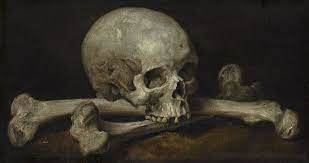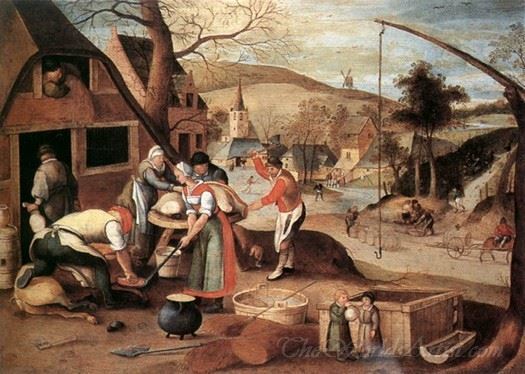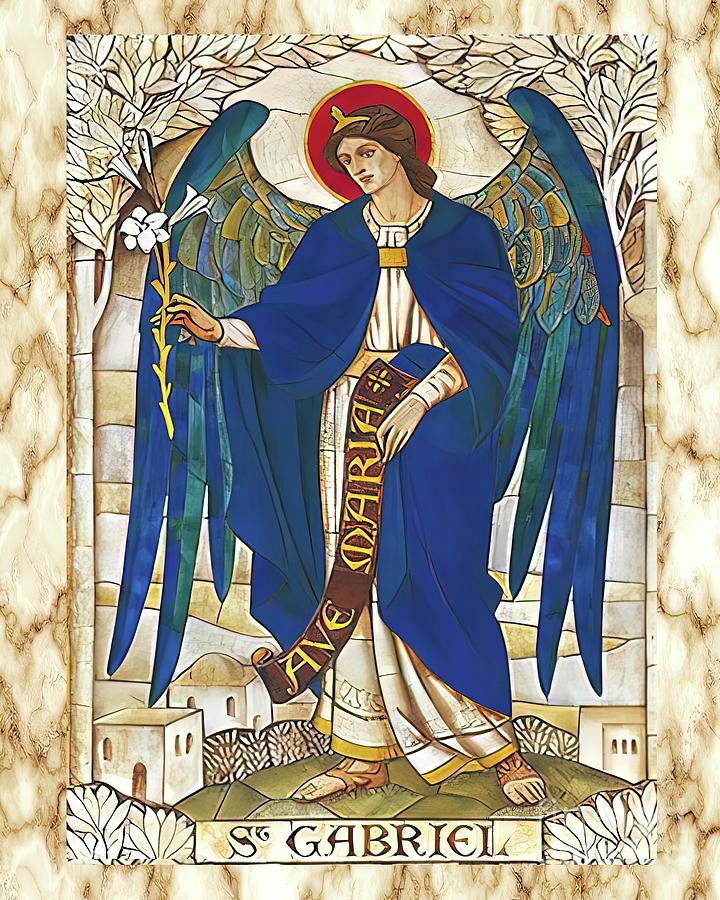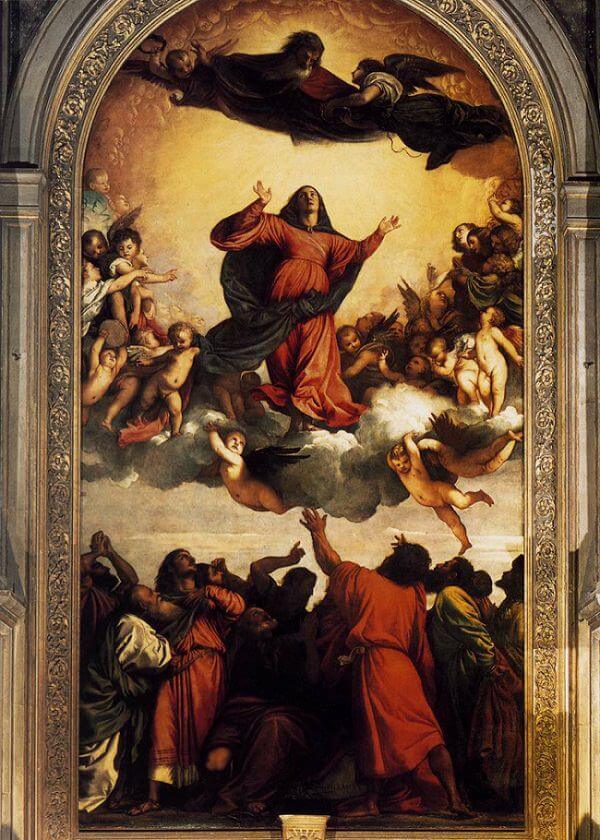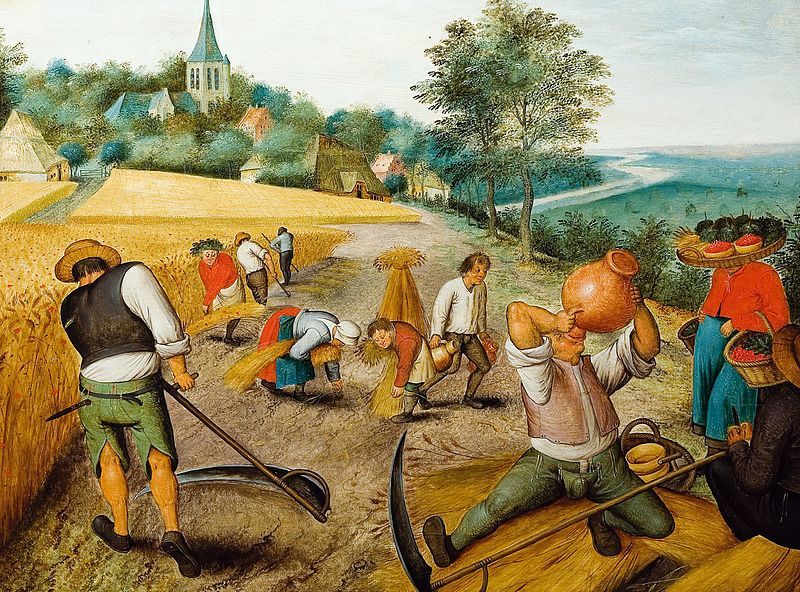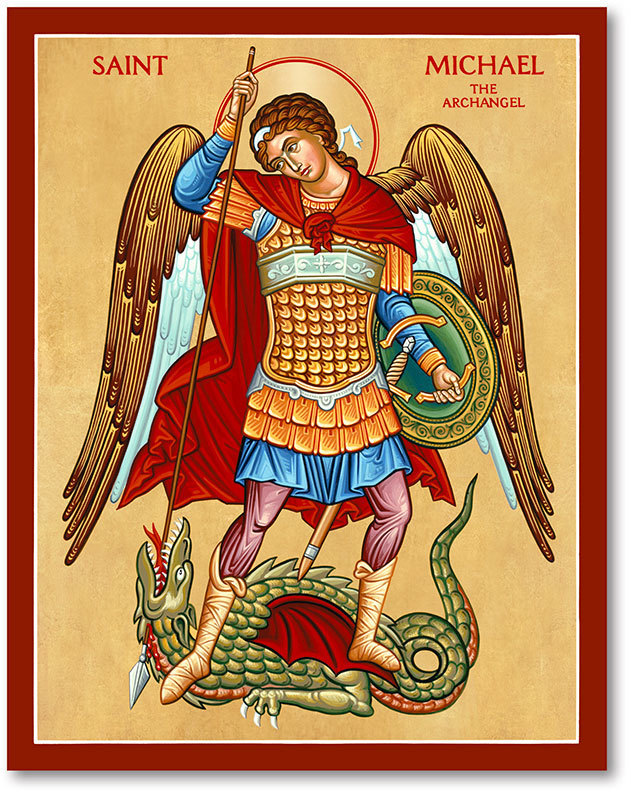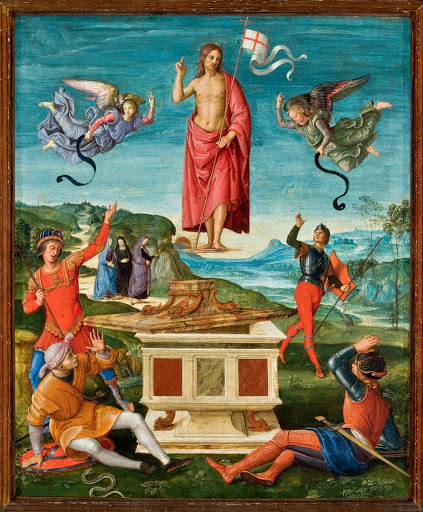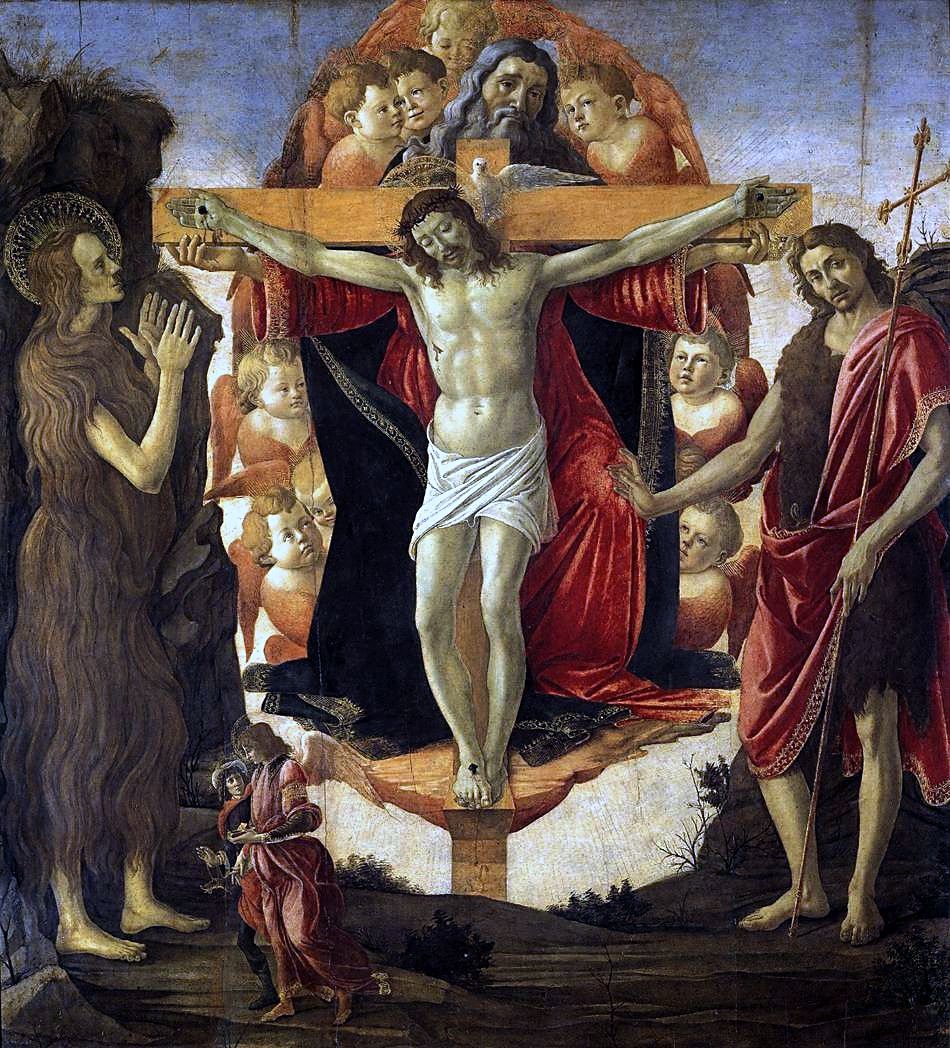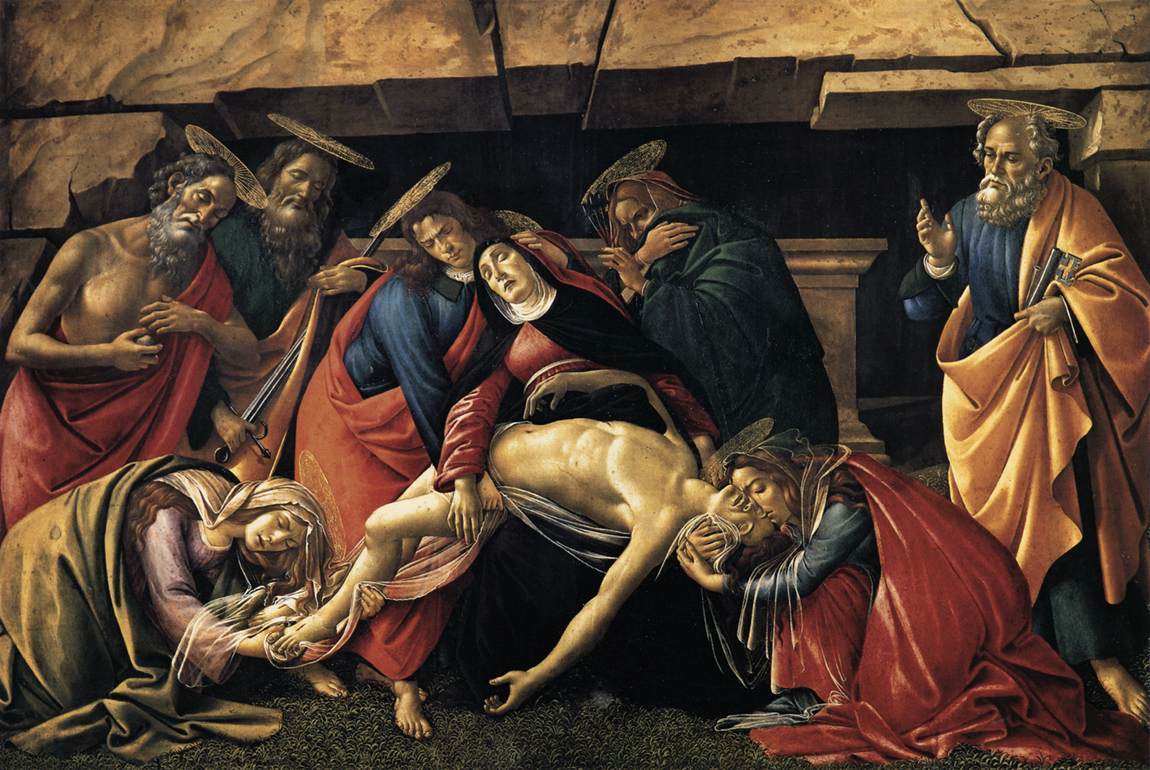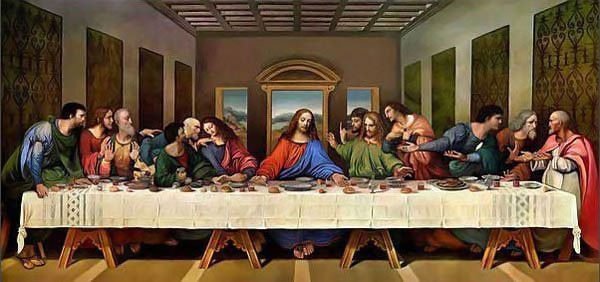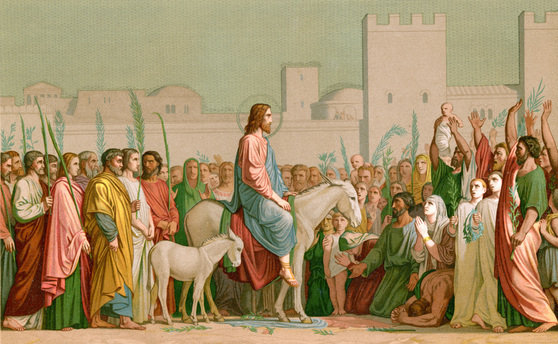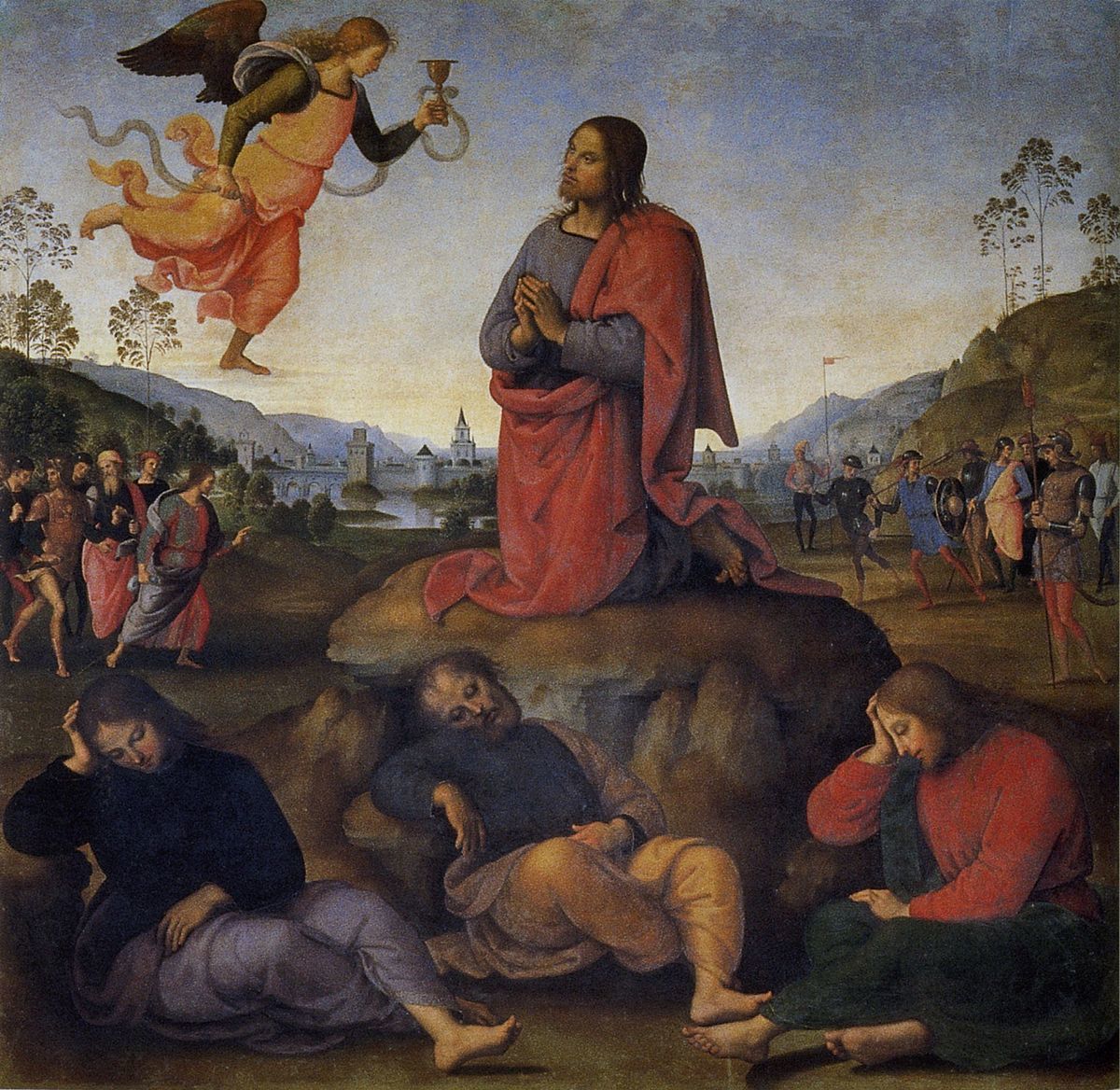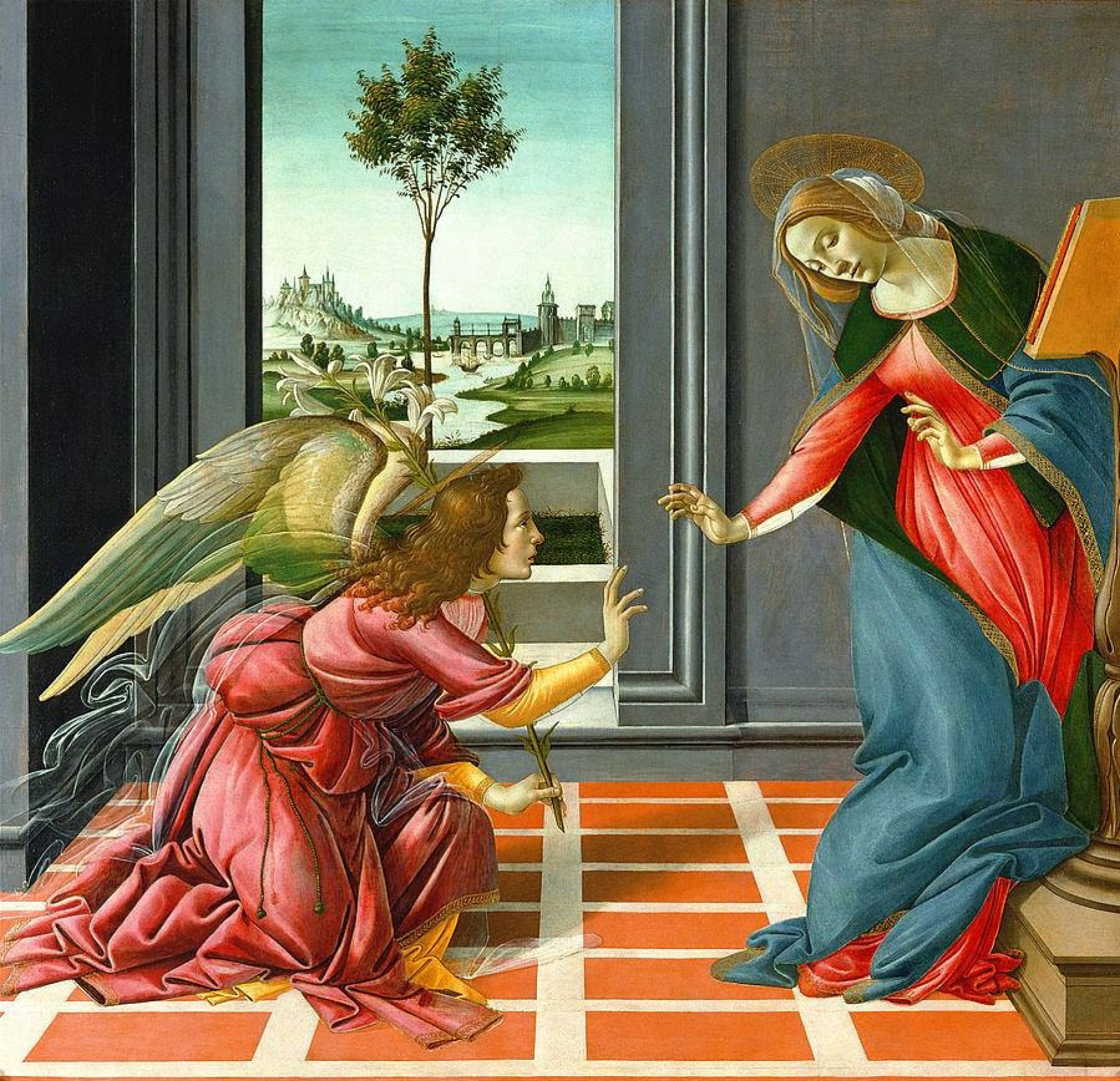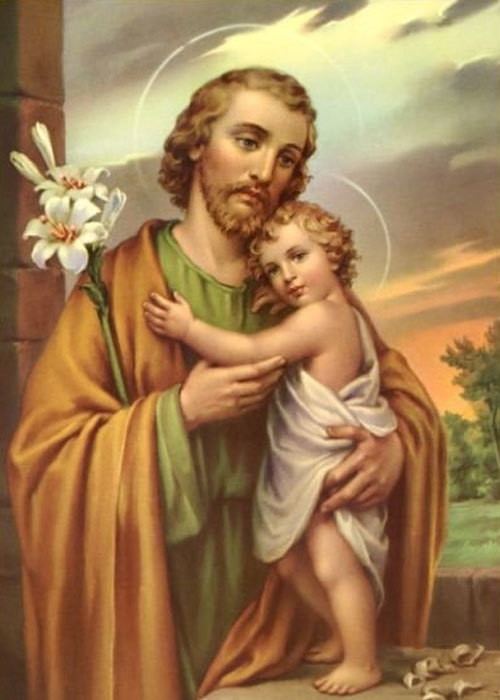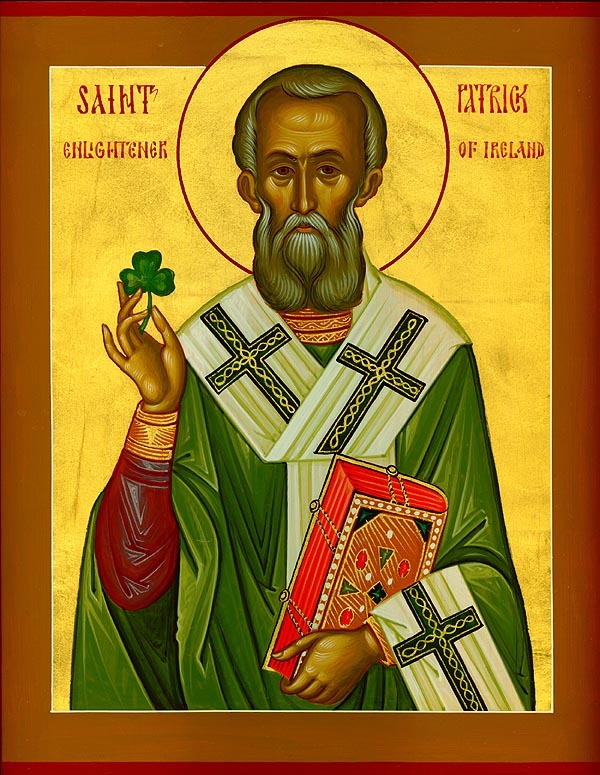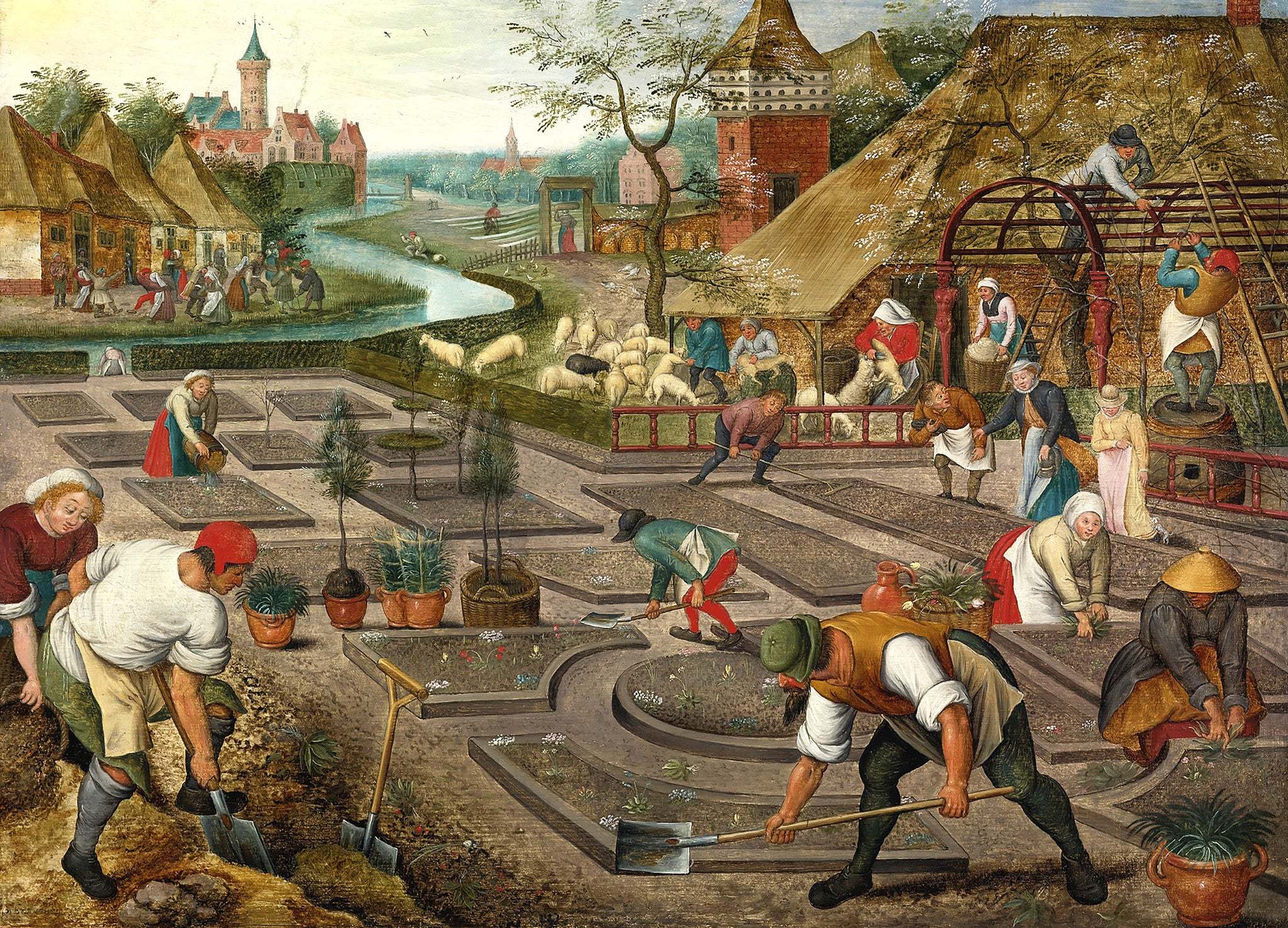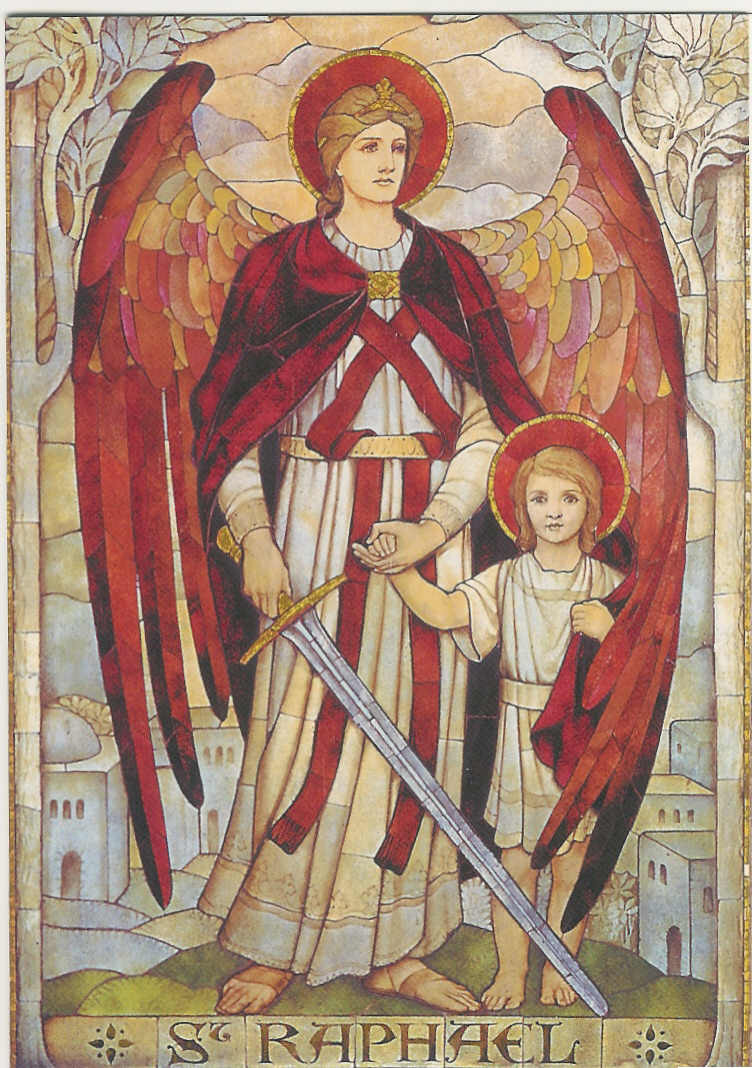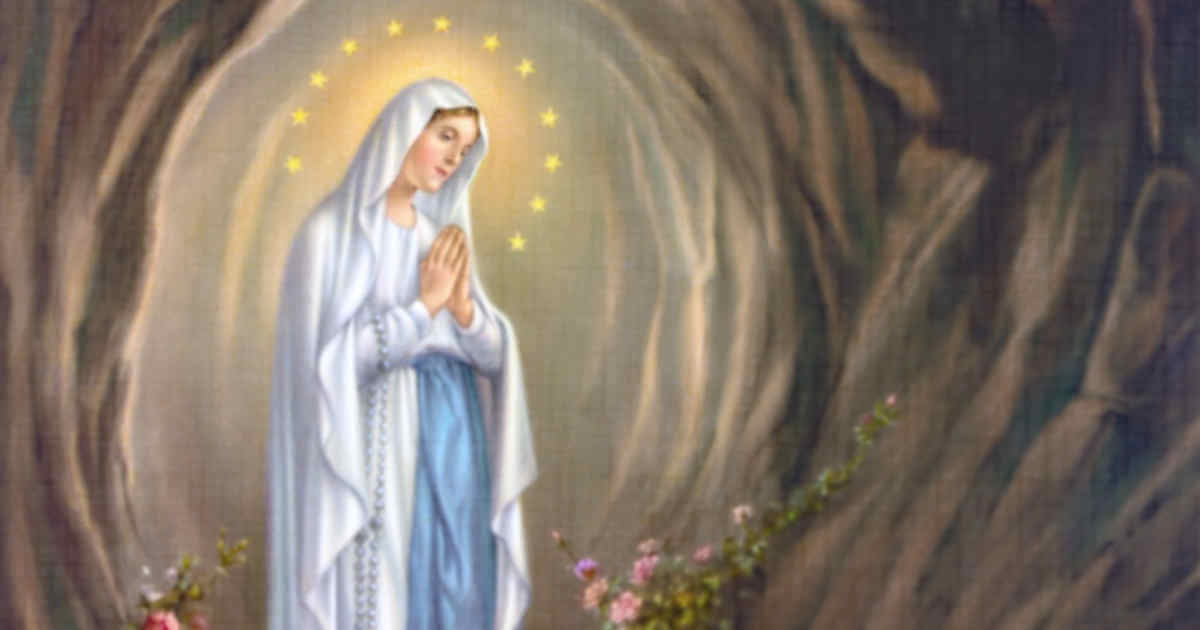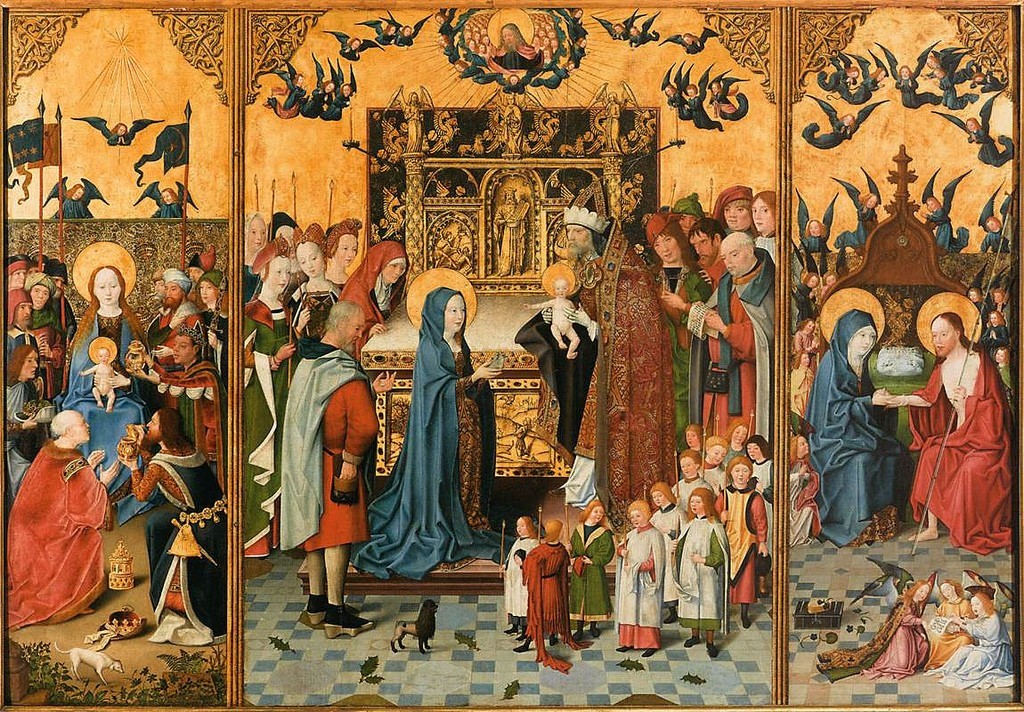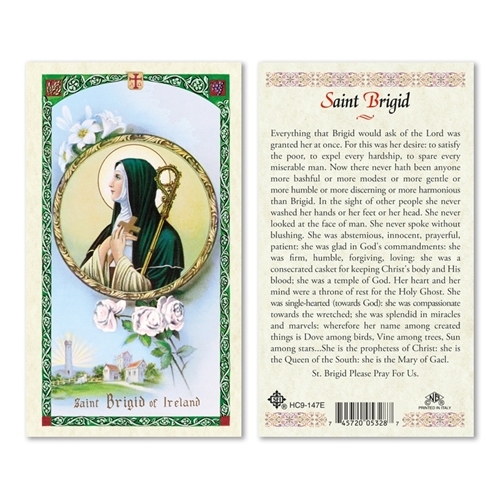 [This post has been updated.]
[This post has been updated.]
Basic Principles of Magic
Most of you will have noticed that the Christian Wheel of the Year series is effectively an initiation-- or, rather, a series of initiations-- into a system of Christian magic. Of course, it doesn't have to be practiced that way-- You can use it simply as a guide to traditional customs that you might use to enhance your spiritual practice and your family life. But for those who want to make the deep-dive into traditional magic practice, I want to do a series of posts introducing and laying out the basic principles of the system of Christian magic we'll be discussing and practicing here. For many of you this will be review; for some it will be new material.
To start, let's answer the question:
What is magic?
Magic Defined
Magic is defined as:
The Art and Science of Causing Changes in Consciousness in Accordance with Will
I've capitalized all of the important words.
Most of the readers here will already be familiar with this definition. If not, read it, read it again, and then read it a third time; it's subtler than it might appear at first. We're going to call this
Definition 1. When we talk about magic here, we always mean "the art and science of causing changes in consciousness in accordance with will."
Alternate Definitions of Magic
Now, this isn't the only definition of magic. It's important to be aware of some of these other definitions-- especially if you belong to a religion that condemns magic, or have to deal with people who do. You'll usually find that when people condemn magic in general, they're using a definition other than the one quoted above, and condemning things that you haven't actually done and wouldn't do.
Catholic theology defines magic as:
the art of performing actions beyond the power of man with the aid of powers other than the Divine
Let's call this
Definition 2. The first thing to note about Definition 2 is just how slippery it is. Is electricity a power other than the Divine? How about x-rays? What about the blind psychological forces used to manipulate people by advertisers? Is it "divine power" that produces life-saving medicines for humans by vivisecting live animals? The Catholic Church permits its followers to make use of all of the foregoing-- but it condemns spiritual healing practices like reiki as "sinful."
Earlier generations of Catholic writers on this topic were far more careful in their thinking than present-day ones. Leaving the ambiguity aside, though, we understand what Definition 2 is getting at-- "Magic" is here defined as seeking the aid of demons. It is condemned on that basis. It hardly needs to be said that the sort of magic we're working with here has nothing to do with demons, and so is not illicit according to Catholic theology (if that's important to you). In fact, because it doesn't involve the evocation of demons or other evil spirits or powers,
it isn't actually magic according to Catholic theology!
Definition 3. In ordinary speech, "magic" or "magical" is often used to mean "wonderful and exciting," with a hint of "beyond the ordinary." Under this definition, the magic that we practice is usually magical, but sometimes it isn't! Modern ceremonial magic is based around the performance of a daily ritual intended to invoke the divine, raise the consciousness of the operator, and chase of evil and unbalancing spirits and forces. The wonder of performing a daily ritual often wears off after a few weeks-- and that's when it's most important to keep doing it. So you might say that magic is sometimes magical, and sometimes it isn't-- and the most important part of practicing magic is to keep going once the magic stops being magical!
Definition 4. Magic is
a faculty of wonderful virtue, full of most high mysteries, containing the most profound contemplation of most secret things, together with the nature, power, quality, substance and virtues thereof, as also the knowledge of whole nature, and it doth instruct us concerning the differing, and agreement of things amongst themselves, whence it produceth its wonderful effects, by uniting the virtues of things through the application of them one to the other, and to their inferior suitable subjects, joining and knitting them together thoroughly by the powers, and virtues of the superior bodies.
This is how Heinrich Cornelius Agrippa defines magic in his Three Books of Occult Philosophy, written in the early 16 century. You'll find similar definitions in many of the old magic books or grimoires. The old definitions are worth careful consideration, as they often dovetail with, contradict, and inform the modern definition in interesting ways.
Definition 5. Magic is a set of tricks or illusions, performed for entertainment.
As I wrote above, Definition 1 is the way we'll be defining magic on this blog. Definition 2 refers to practices in which we will never engage and which we condemn. Our magic will sometimes be magic according to Definition 3, and sometimes it won't be. Definition 4 is a helpful supplement. The type of magic described in Definition 5 is beyond the scope of this blog.
Some Implications of Definition 1Let's conclude by talking about some of the implications of defining magic in the way that we have.
Reversibility of the TermsThe first thing to note about the definition of magic is that the terms are reversible. To practice magic is to cause or attempt to cause changes in consciousness in accordance with will. Also-- any attempt to cause changes in consciousness in accordance with will
is magic.
This is of critical importance, because it means that, according to the terms we are using here, magic is being practiced all around us, all the time. And, the great majority of the time, that magic is targeting us. That is to say: It is our consciousness that is being changed, according to someone else's will.
Example 1Some years ago-- around 2006, I guess-- I read about a study in which subjects were gathered in a room and given a questionnaire about their political views. In one of the rooms used for the study, there was an American flag; the other had no flag. It was found that subjects in the same room as the American flag were more likely to express right-wing political opinions.
Shortly after I read about this, every commentator on the right-wing Fox News channel, Republican members of Congress, and other public conservatives began wearing American flag pins on their lapels in public. Moreover, they started insisting that everyone else needed to wear American flag pins on their shirts as well.
Like every act of magic, the American Flag Lapel Pin spell (as we might call it) was intended to produce a change in consciousness in accordance with will. The change in question was agreement with right-wing political opinions. The will was the will of the right-wing politicians in question, or, rather, their handlers; its intended goal was increased political power for the Republican Party.

Magic is being used around you and against you all the time. And it doesn't matter if the people doing it know that it's magic
or not.
By the way-- that was nearly two decades ago. It wouldn't surprise me if the image of the American flag prompted very different political responses today, in 2022. I haven't seen any follow up study, but it's worth noting that American flag lapel pins are no longer worn. Images like the American flag are part of the Astral Plane in magical theory, which we'll be discussing later on. The constellation of images on the Astral Plane are never fixed, but always in flux.
Example 2Another example.

Kind of awful, isn't it? I agree. And that's the first thing to notice about this one:
It no longer works. That nauseated feeling you have? That's magical failure. But because it doesn't work, we can study it and see how it was intended to work.
Notice the components of the image:
The caption invokes the Family Doctor, a position of great authority. In the 1950s as well as today, for many people, the word "Doctor" produces roughly the same response that the word "priest" did for a medieval peasant. These are people who have access to secret knowledge and the means to personal salvation.
The picture shows a man leaving a woman and her daughter. The feelings invoked in a woman seeing an image like this are fear and heartache. In the era in which this image was produced, a woman on her own was in serious trouble. And notice: She's not by herself.
She's with her child. The image thus invokes very deep emotions-- the protectiveness instinct of a mother toward her children. This is very common in advertising, which consists, as a whole, of low-grade sorcery of this sort. The human soul consists of multiple parts. Many of those parts are shared with other animals, the protective instinct of a mother toward her young very much included. These bestial parts of our soul are lower than the human parts, including the reason, but they are also older and much stronger. The purpose of an advertisement like this is essentially to invoke the beast within the target and lead it to overwhelm the human being. Why? Because, simply put, animals are much easier to control than people.
Finally, note the overall subject matter of the advertisement-- and my apologies for bringing this up. Simply put, it's intended to provoke anxiety in women over the state of their genitals. In other words, it draws attention to the reproductive organs, while at the same time provoking embarrassment and vulnerability. It is, in a real sense, a kind of visual rape.
Notice that the bestial part of the soul is invoked at the exact same time as the authority of the doctor is invoked. The two work together to produce both irrationality and submissiveness on the part of the target. This is the change in consciousness. The will is the will of the advertiser, or, rather, the company who paid for the advertisement; its goal is to provoke women into purchasing unnecessary and dangerous products in order to enrich its manufacturers.
It's easy to dismiss advertisements like this as products of a by-gone era, offensive or silly as one prefers to see them. Don't make that mistake. The science of advertising has only evolved since the 1950s. The dangerous advertisements aren't the ones that you can see through-- but the ones that you can't. Those are the magical workings that are still in operation.
Doesn't that mean magic is evil?
In each of the foregoing cases, the target of the magical operation is being influenced in such a way as to increase the power or the wealth of the operator-- the Republican Party and its donors in the first case, the Lysol corporation and its distributors in the second. These are works of evil magic, for two reasons. First, the change in consciousness being provoked degrades the target-- especially in the second case. As we will see later on, human consciousness consists of several different parts, which are arranged hierarchically. When we activate the higher parts of the consciousness, we are elevated to the level of the saints and angels; when the lower parts of ourselves are activated, we are degraded to the level of beasts. To deliberately lower the consciousness of another is to harm them, by removing them from the awareness of spiritual realities.
Second, the end goal of the magical act is not the good of the target, but the satisfaction of the appetites or desires of the operator. In the first case, the desire is for power; in the second, for money. To harm another for the sake of your own desires is more or less the definition of evil behavior.
But does that mean there is no good magic?
Of course not!
Here is another magical image, one of my personal favorites:

Take a moment to clear your mind, take a moment, and contemplate this image. What changes in consciousness does it provoke?
If you're in any way like me, it probably induces a sense of devotion to the Virgin Mary and a desire to be united with her and with Jesus. You might see the crown being placed on her head as a reminder of the crown of glory awaiting all Christians. You might feel something undescribable, a movement of an ineffable energy that brings tears to your eyes and stirs your soul with a longing for the presence of God.
We can distinguish between good or "white" magic and evil or black magic quite simply: The aim of good magic is the good of the target, while the aim of evil magic is evil for the target. This is true whether the target is yourself, another person, or a larger system like a garden or a city.
Of course, this raises the question: Exactly what is good? And what is evil? We'll get to that in due time.
(Dear Reader: You may have noticed that this post is a draft of the first chapter of a book. Of course, if you've been here for more than a week or so you already know how I define "good" and "evil.")
Consciousness and the WillAccording to our definition, the component parts of magic are
will and
consciousness. As such, it will be helpful to define these terms as well.
For now, let's define will as the
capacity to choose an action, and consciousness as the
capacity for representation.
To choose an action means to act in a way that is unimpeded and uninfluenced by any outside force. It immediately follows that there are many forms of limitation on the will. The first limitation is simply that of capacity. I have a cat sitting here on my desk. I can write these words, but she can't. Nor can she think the thoughts that led to them, nor read them and understand them. My body and brain allow me to perform actions which are not available to her-- and never will be. On the other hand, there are certain things that she can do that I can't, like hunting mice or sleeping for 18 hours straight. The will is limited in other ways as well. My capacity to choose an action is constrained by my knowledge of the choices available, my knowledge of the consequences of my choices, and any prior knowledge that might in any way impact my choice.
Aristotle discussed the limitations that knowledge and compulsion place upon the will at some length in
Book 3 of his Nichomachaean Ethics.
Consciousness is the capacity for representation. Here I'm borrowing an idea from Schopenhaeuer, not inappropriately, as his influence is very present in modern occultism. For now, though, all we mean by "representation" is the "ability to have an experience." And so "consciousness" doesn't refer to the complexity of an experience, or to modern ideas about "intelligence." The computer I'm using may be more complex than the brain of the cat sitting next to it, but it doesn't matter-- the cat is conscious, and so she can experience the simple passions of pain, hunger, thirst, and fear; higher emotions of love and loneliness; and thoughts which are rudimentary analogs of human thought. The computer does none of these things, and never will-- as far as we know.
From all of this, it follows that both the will and the consciousness admit of degrees of development. Every living being participates of will and consciousness to some degree, even if it's very simple. An ant can choose to go right or left around a rock or to crawl over the rock. It represents the rock to itself through its eyes and antennae. And that's about it. A cat's field of choices and its range of experiences are greater and more complex; those of a human being more complex still.
As magic is the art and science of causing changes in consciousness in accordance with the will, it follows that magical practice includes the expansion of the powers of both the will and the consciousness.
A being that had a totally free will with no limitations either of knowledge or power; and a capacity to represent all possible experiences in its consciousness at once, with no limitations, would be called
omnipotent and
omniscient. Or, to say it another way, God.
A Definition of Christian Magic
We've defined magic.We've defined will and consciousness, and we've defined good magic and evil magic.
But what about Christian magic? We should probably define it before we continue.
Christian magic is, quite simply, magic in service of Christianity.
Or, to say it another way, a work of magic is Christian if the ultimate end of the change in consciousness it provokes is union with the Christian God, which is the ultimate end of Christianity.
Every Christian denomination without exception practices magic, by the way. Yes, that includes Protestants of every sort. Some are better at it than others.
Note for PracticeMany of you already have a personal spiritual practice. But this series is intended a basic self-study in magical practice, and you're very welcome to follow along with that in mind. And so every one of these posts will have an assignment. For today, consider the following questions:
1. What would it mean to expand your own will and your own consciousness?
2. In what way is "expansion of the will and consciousness" identical to "union with God"? In what ways might it be different?
3. What magical workings are currently being used to influence your own consciousness, in accordance with another's will? What would it be like if you were free of them?
Let's leave it there for today. Next time we'll talk about the basic principles of magic, and then we'll go on to present a basic curriculum of Christian magic. That should take us to the beginning of Lent, when we'll put the ideas we've discussed into practice.
Click here to support this blog.